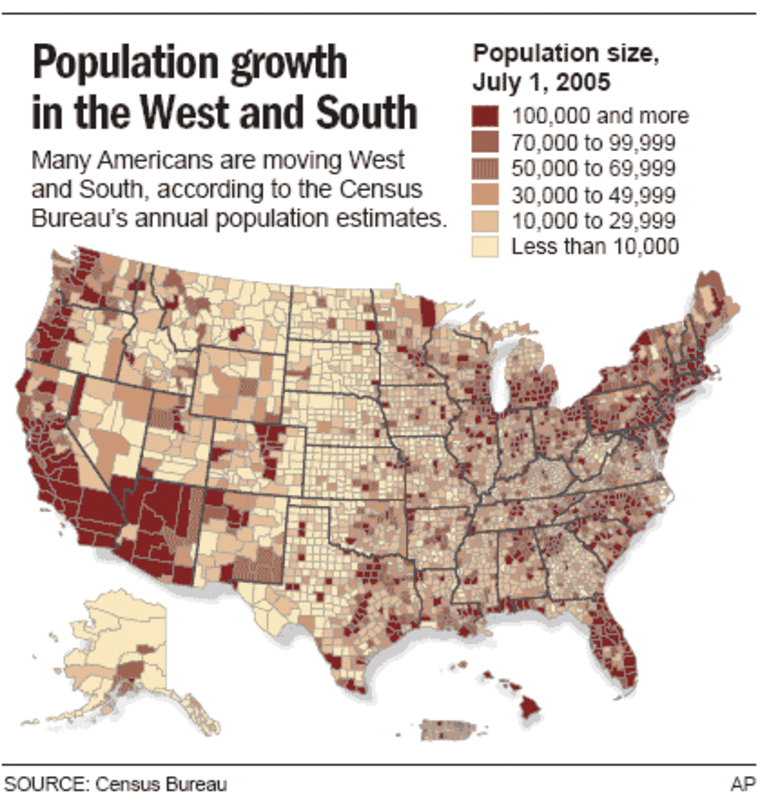America’s fastest growing counties are suburban, rural or a mixture of both as more people seek big yards and open spaces, even if that means a long commute.
New Census Bureau estimates show the nation’s population shifting south and west, to the distant suburbs of metropolitan areas stretching from Florida to Utah.
“I think low density is the attraction,” said William Frey, a demographer at the Brookings Institution, a Washington think tank. “People would rather make a long commute and have a big yard and a big house.”
The estimates released Thursday are for July 1, 2005, before Hurricane Katrina struck the Gulf Coast and forced thousands of people to relocate. The population figures are calculated using administrative records and estimates for births, deaths and net migration.
Flagler County, Fla., north of Daytona Beach, grew by 10.7 percent, making it the fastest growing county in the country for the second straight year.
Others in the top five: Lyon County, Nev., outside Carson City and Reno; Kendall County, Ill., about 45 miles southwest of Chicago; Rockwall County, Texas, east of Dallas; and Washington County, Utah, which is closer to Las Vegas than to Salt Lake City.
Of course, that doesn’t mean they are the most populous counties.
Serious growing pains
Many of the counties are still relatively small, with populations under 100,000. But they are growing at rates far exceeding the national growth rate of about 1 percent a year.
Thirteen of the 20 fastest growing counties are in the South, four are in the West and three are in the Midwest. The Northeast had only one county among the 100 fastest growing: Pike County in northeastern Pennsylvania, which ranked 72nd.

“We’ve been going west forever,” Frey said of the country’s migration patterns. “Movement to the South has tended to occur more after World War II.”
Marc Perry, head of the Census Bureau’s population distribution branch, said fast-growing counties need jobs within commuting distance.
“Most people who move are within the working ages,” Perry said. “There has to be a job supporting that move.”
Jobs as mobile as the commute
Commutes are long for some, he said, but in many places, jobs are moving outward as well.
Pike County, along Pennsylvania’s border with New Jersey, is a 70-mile commute to New York City. But they are part of the same metropolitan area because of all the development in between, Perry said.
“People aren’t necessarily commuting all the way into Manhattan,” he said. “But now that New York has suburbanized most of northern New Jersey, people can commute part of the way in.”
Rural America has been adding population for about 30 years, after losing residents for much of the first half of the 20th Century, according to a study released Wednesday by the Carsey Institute at the University of New Hampshire. Much of those gains have been on the “fringes of metropolitan areas,” the study said.
Los Angeles remains the nation’s largest county, with 9.9 million people. Maricopa County, Ariz., home to Phoenix and Scottsdale, added the most people, 137,000, for the year ending in July 2005.
Flagler County in Florida has grown by 53 percent since 2000, a faster rate than any other county this decade. It had 76,410 residents in July 2005, and probably more by now.
That growth means road projects, new government buildings and skyrocketing school enrollment, said Carl Laundrie, a county administration spokesman.
“There isn’t a county in the world that’s prepared for 10 percent growth” a year, Laundrie said. “We are on track to build a school a year for the next 10 years.”